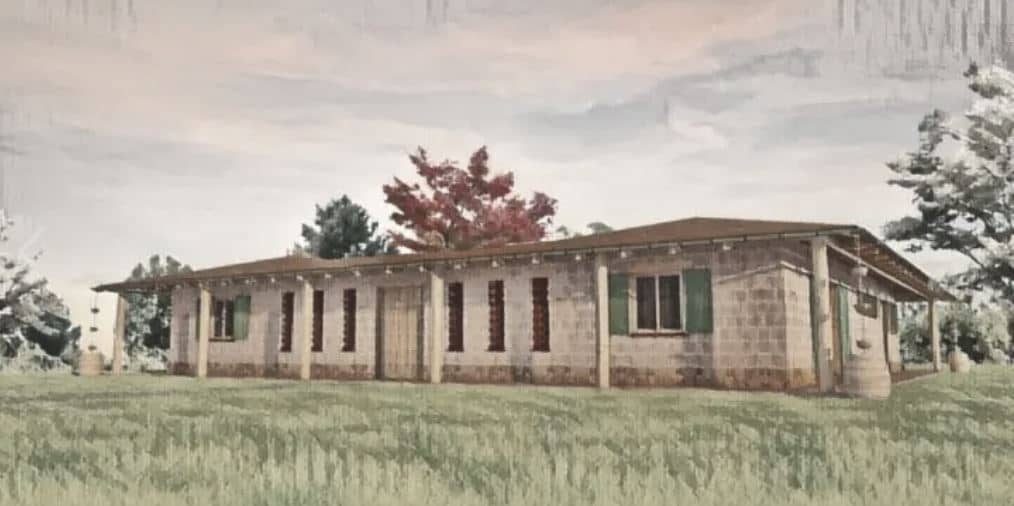Concept for a Courtyard House in Kwale
Building a home? Make sure you study your site before designing it. A house does not work in isolation. It is affected by countless factors that should be taken into account. The site plays a dominant role in how the house turns out. A house might be great for a certain site and a complete disaster for another. The layout, orientation, openings, size and design are just a few of the things affected. Here are a number of aspects to consider when thinking of the site and how it affects the house you want to build;
1. Site Location & Placement

In urbanized areas corner locations are great for natural lighting. They are also great for planning as they give flexibility in terms of access planning. Design possibilities in corner plots increase. Corner plot areas also tend to be high traffic areas. The house should be designed accordingly.
Location affects the expected construction cost. Building within the city is not the same as building in suburban areas. Remote locations such as islands, reserves and mountains are challenging for construction due to their inaccessibility. Inadequate planning may result in exponential rise in cost.
Most factors are affected by the location including the expected geology, context, terrain, natural features and climate. Some of these are covered below.
2. Plot Size

The plot size affects how the house is conceptualized from the start. It determines the size and scale of what one can build. The size of the plot in the most general terms will affect how many spaces you can fit into it and how much freedom you have to place the functions within the plot.
Larger plots present more possibilities and generally have less constraints. They do require careful planning of site. A small plot could be easier to plan out but runs the danger of being too squeezed. The tendency to build vertically may result in circulation that is not as fluid as houses built horizontally.
3. Plot Shape

The shape of the plot affects how the house is designed and oriented. The shape might be regular or irregular. It could more square or rectangular.. The effect of the shape is a prominent design factor in smaller plots. Unusually shaped plots may present a design challenge. This may sometimes result in interesting solutions. They may also lead to increase in construction cost.
In larger plots, the shape has a more subtle effects in the way we think of it and the different blocks are positioned. Sometimes a plot may stretch unusually such that the house may end up looking into a neighbouring site. The site planning should address this from early on.
4. Slope

A site can be sloping or flat. It could be a mixture of both. A flat or gently sloping plot is great for building and simpler to plan out. Steeply sloping plots are difficult to plan out. Retaining walls commonly built in such areas are expensive.
They are great for ventilation, give better access to natural light and provide opportunities for more and different views from the house. Multiple entries at different elevations need to also be considered. A plot may have varying slope in different parts. This largely influences where the house will be positioned on the plot.
Ruggedness of the land is a key factor when considering the cost of building. A widely varying rugged plot might require a lot of cut and fill work for building. This is a large cost to consider.
5. Geology

Plot geology affects how the foundation of the house would be built. The depth and type of foundation is highly dependent on the soil and rock geology at the site. This may affect the final cost of construction. Some parts may be unfeasible to build on and would affect the positioning on the plot. The porosity of soil is a good indicator of the relation to water and drainage. This will inform how the site is affected during rains and even the availability and depth of water for a borehole.
6. Context

The surrounding conditions cover an overwhelming number of elements including access/roads, neighbouring building structures, surrounding slope, vernacular building techniques, utilities, construction regulations in the area, expected developments in the area, local expertise & local materials, surrounding scenery & features, Surrounding traffic & noise and expected light glare. Natural and industrial conditions such as flooding and toxic waste are also important factors to consider.
7. Weather & Climate

Weather and climate factors such as the sun, wind, rain and humidity have one of the most dominant impacts on the design and planning of a home. The sun affects heat and natural lighting. Its path within the day and over a year is also important. Wind and rain affect weathering. Strong winds and snow may be load factors in the structural design. Wind is also a factor in ventilation.
8. Other Features

Sometimes there are features that are unique to a certain plot. An old tree or certain rock formations could inform a number of design decisions. The sound of flowing water from a nearby stream could be something you want to enhance or shield depending on your preference. Designing around such features could lead to interesting solutions.
A site inevitably affects your home design. Whether the effect is positive or negative depends on how carefully the factors above are considered. A site presents opportunities that can be highlighted and enhanced. It has threats and downsides that can be minimized and solved. There is no doubt that ignoring the site will lead to a house that is less than optimal. Missed opportunities can be a lifetime of heartache and glaring issues are seldom solved as elegantly afterwards. A healthy design attitude and framing challenges as an opportunity can lead to a house that is pleasant in surprising ways.





